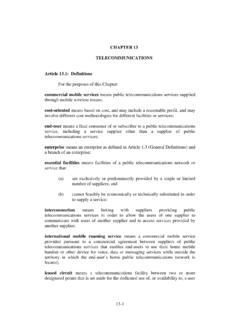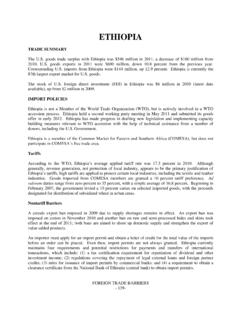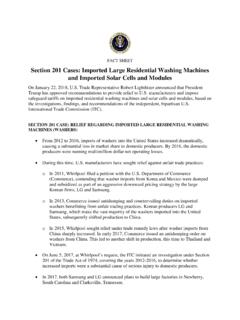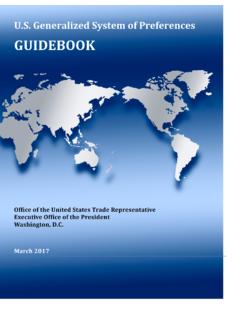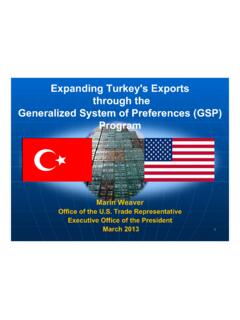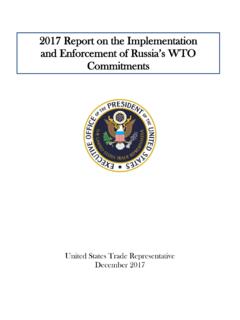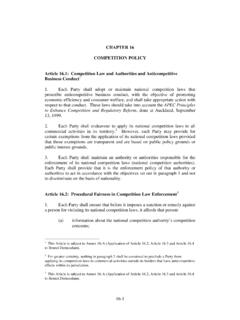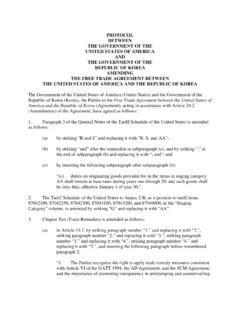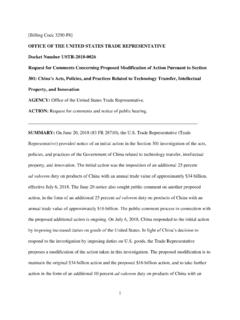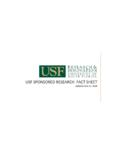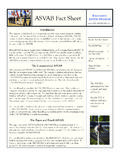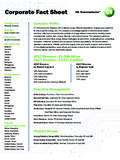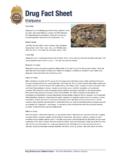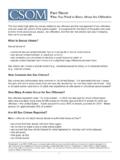Transcription of Section 301 Fact Sheet - ustr.gov
1 fact Sheet Section 301 fact Sheet Following a Memorandum from President Trump, on August 18, 2017, the Trade Representative (USTR) initiated an investigation under Section 301 of the Trade Act of 1974 into the government of China s acts, policies, and practices related to technology transfer, intellectual property, and innovation. Under President Trump s leadership, the United States is committed to rebalancing the trade relationship to achieve more fair and reciprocal trade. After years of dialogues that produced minimal results and commitments that China did not honor, the United States is taking action to confront China over its state-led, market-distorting forced technology transfers, intellectual property practices, and cyber intrusions of commercial networks.
2 The goal is to address unfair Chinese economic practices and create a level playing field that will give all Americans a better chance to succeed. 1. Section 301 INVESTIGATION Under Section 301 of the Trade Act of 1974, USTR initiated an investigation to determine whether China s acts, policies, and practices related to technology transfer, intellectual property, and innovation are unreasonable, unjustifiable, or discriminatory and burden or restrict commerce. USTR held a public hearing on October 10, 2017, consulted with private sector advisory committees, initiated two rounds of public written comment periods, and received approximately 70 written submissions from trade associations, companies and workers, academics, think tanks, and law firms.
3 Following a thorough analysis of available evidence, USTR, with the assistance of the interagency Section 301 committee, prepared findings showing that the acts, policies, and practices of the Chinese government related to technology transfer, intellectual property, and innovation are unreasonable or discriminatory and burden or restrict commerce. o China uses joint venture requirements, foreign investment restrictions, and administrative review and licensing processes to force or pressure technology transfers from American companies. o China uses discriminatory licensing processes to transfer technologies from companies to Chinese companies.
4 O China directs and facilitates investments and acquisitions which generate large-scale technology transfer. o China conducts and supports cyber intrusions into computer networks to gain access to valuable business information. An interagency team of subject matter experts and economists estimates that China s policies result in harm to the economy of at least $50 billion per year. 2. Section 301 RESPONSES In a Memorandum signed on March 22, 2018, the President has directed his Administration to take a range of actions responding to China s acts, policies, and practices involving the unfair and harmful acquisition of technology.
5 O WTO Case: At the direction of the President, USTR will confront China s discriminatory technology licensing practices through a World Trade Organization (WTO) dispute. o 25 Percent Ad Valorem Duties: USTR will propose additional tariffs on certain products of China, with an annual trade value commensurate with the harm caused to the economy resulting from China s unfair policies. The proposed product list subject to the tariffs will include aerospace, information and communication technology, and machinery. o Investment Restrictions: The President also has directed his Administration to respond to Chinese investment aimed at obtaining key technologies.
6 Relevant departments and agencies will work with the Treasury Department to propose measures addressing China s investment practices involving the acquisition of sensitive technologies. 3. PROCESS FOR TARIFF ACTION The March 22, 2018, Presidential Memorandum instructs USTR to publish a proposed list of products subject to additional tariffs within 15 days. o USTR plans to announce the proposed list within the next several days. o The list will be set out in a Federal Register notice seeking public comments on the proposed tariff action. Comments will be due 30 days from publication.
7 The notice will also announce a date for a public hearing. o USTR, with the assistance of the interagency Section 301 Committee, will review and analyze the comments. o When the process is completed, USTR will announce the final determination on the tariff action, and will publish the product list in the Federal Register. ###
